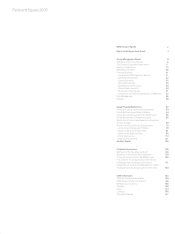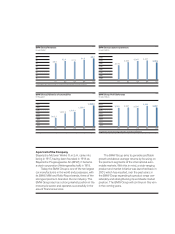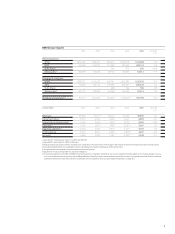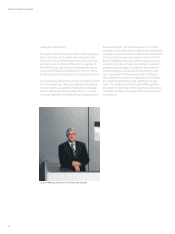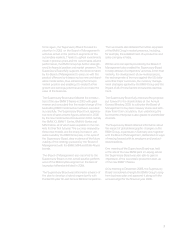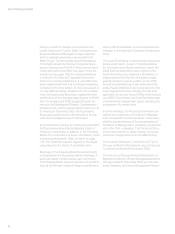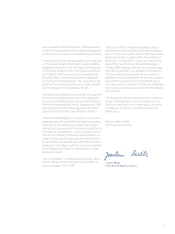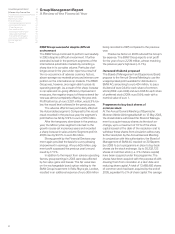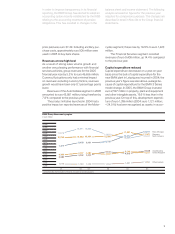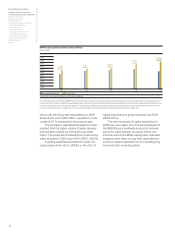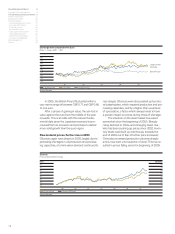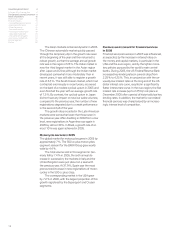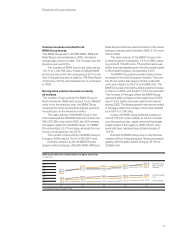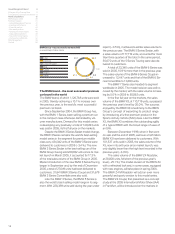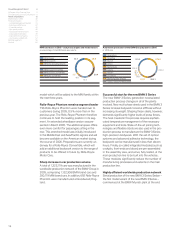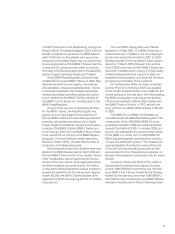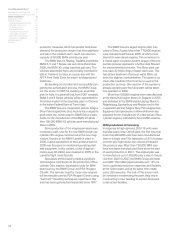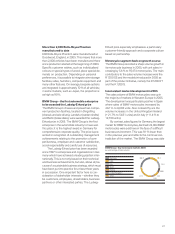BMW 2005 Annual Report Download - page 12
Download and view the complete annual report
Please find page 12 of the 2005 BMW annual report below. You can navigate through the pages in the report by either clicking on the pages listed below, or by using the keyword search tool below to find specific information within the annual report.11
Business environment
Economic developments in 2005
The global economy again grew strongly in 2005,
albeit with growth rates slightly lower than in the
previous year. This development was primarily attrib-
utable to the sharp rise in the price of crude oil and
other raw materials which resulted in higher costs
for businesses and in a further reduction of buying
power on the part of consumers. The dampening
effect of these factors was only partially offset by
greater demand from countries which export raw
materials.
Once again, it was the US economy which as-
sumed the role of economic driving force in 2005.
Helped by positive developments on the labour
market and a sharp increase in real estate prices,
private consumption again generated vigorous im-
petus for the US economy in 2005. In addition to
robust investment activities, there were also the first
positive signals in the area of exports. This did not
bring about, however, a reduction in the current ac-
count deficit. Overall, the gross domestic product of
the USA grew by 3.5% in 2005.
The volume of business in the new EU member
countries also continued to grow strongly in 2005,
with both export and domestic demand contributing
positively to the upturn. This was further stimulated
by monetary and fiscal policies in a number of
countries.
By contrast, economic momentum remained
weak in the euro region. Although the European
economy was able to recover from its slow growth
phase at the beginning of the year, the rise in oil
prices and the continued strong euro against the
US dollar held down growth rates during the remain-
der of the year. In most countries, most of the posi-
tive impulses came from exports, whilst the domes-
tic economies continued to perform only modestly.
Overall, the euro region economy only grew by ap-
proximately 1.5% in 2005.
Germany’s economic recovery remained very
sluggish. Just like the rest of Europe, the German
economy was able to benefit from the acceleration
of the global economy seen at the beginning of 2005;
however, the on-going crisis in the construction in-
dustry and, above all, the persistent reluctance of
consumers to spend, kept growth rates down, so that
the German economy grew by less that 1% in 2005
despite the strong momentum generated by exports.
The strongest impulses for the global economy
in 2005 came from Asia. As in previous years, China
recorded the fastest growth, at more than 9%; gross
domestic product also grew strongly in India, rising
by more than 7%. South East Asian economies reg-
istered growth of about 4.5%.
Japan has now overcome the recession experi-
enced in 2004. Renewed increase in demand for
exports and significantly stronger domestic demand
both contributed to this development. The fact that
the structure of growth is well-balanced suggests
that Japan’s long weak phase is finally at an end, par-
ticularly in conjunction with the fact that deflationary
trends are also slowly diminishing. Overall, the Japan-
ese
economy grew in 2005 by approximately 2.5%.
US dollar gains strength over course of year
The US dollar exchange rate developed over the
course of 2005 in favour of companies exporting
from Europe. The euro fell from its high of US dollar
1.34 to below US dollar 1.17 and stood at US dollar
1.18 at the year-end, some 13% below the rate at
the beginning of the year. In addition to the persist-
ing difference between growth rates in the euro
region and the USA, the increasing gap in interest
rates also contributed to the weakening of the euro.
In the light of these factors, the USA’s current ac-
count deficit became less of an issue. In the long-
term, however, it is likely that this issue will re-emerge,
so that there is still a risk that the euro will appreciate
in value.
General Economic Environment


